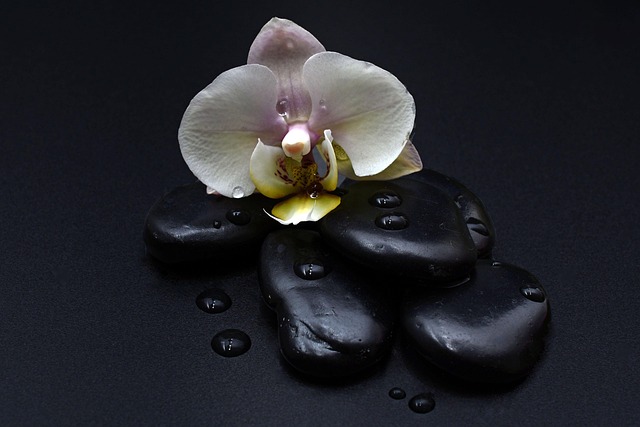Modern therapies for therapies for joint pain relief offer a holistic spectrum combining scientific innovations with natural remedies, including physical therapy, exercises, acupuncture, herbal supplements, and dietary changes. Natural approaches like ginger, turmeric, omega-3 fatty acids, and essential oils provide anti-inflammatory and analgesic effects, potentially reducing side effects of conventional treatments. Integrating modern medicine with alternative therapies offers a balanced treatment plan, improving mobility, self-healing, and quality of life while potentially reducing long-term medication needs. Lifestyle changes, including low-impact exercise, good posture, balanced diet, hydration, and home remedies, also contribute to effective therapies for joint pain relief.
Suffering from joint pain? You’re not alone. Whether from age, injury, or inflammation, finding effective relief can transform your life. This article explores a holistic approach to managing joint pain by combining modern medical treatments with time-tested natural remedies. From understanding the underlying causes to discovering powerful therapies for joint pain relief, get ready to unlock a happier, more active lifestyle. Learn about natural anti-inflammatory strategies, the benefits of integrating Western medicine with alternative therapies, and essential lifestyle changes for long-term comfort.
- Understanding Joint Pain: Causes and Modern Approaches
- Natural Remedies for Inflammation and Pain Reduction
- Integrating Western Medicine with Alternative Therapies
- Lifestyle Changes and Home Care for Long-Term Relief
Understanding Joint Pain: Causes and Modern Approaches

Joint pain is a common issue that can stem from various causes, including arthritis, injuries, and wear and tear over time. Modern approaches to managing this discomfort have evolved significantly, moving beyond traditional pharmaceutical options towards a more holistic view of treatment. Today, therapies for joint pain relief encompass a diverse range of methods, combining both scientific advancements and natural remedies.
The shift towards a modern approach recognizes the importance of addressing not just the symptoms but also the underlying conditions causing joint pain. This includes innovative treatments like physical therapy, specialized exercises, and advanced medical procedures. Simultaneously, natural remedies such as acupuncture, herbal supplements, and dietary changes are gaining recognition for their potential to complement conventional therapies, offering a more comprehensive and balanced approach to relief.
Natural Remedies for Inflammation and Pain Reduction

Natural remedies have gained popularity as a comprehensive approach to managing joint pain and inflammation, offering an alternative or complement to modern medications. These therapies focus on harnessing the healing power of plants, dietary changes, and lifestyle adjustments to provide effective relief. For instance, ginger and turmeric are well-known for their anti-inflammatory properties, often used topically or in teas to reduce joint discomfort.
Other natural remedies include incorporating omega-3 fatty acids from fish oil or flaxseeds into your diet, as they help decrease inflammation and pain associated with conditions like arthritis. Additionally, certain essential oils, such as eucalyptus and rosemary, possess analgesic and anti-inflammatory effects when applied topically or used in aromatherapy. These therapies for joint pain relief provide a gentle, holistic approach that many individuals find beneficial for managing chronic conditions while potentially reducing the side effects often associated with conventional treatments.
Integrating Western Medicine with Alternative Therapies

In many cases, combining modern medical treatments with alternative therapies offers a comprehensive approach to managing and alleviating joint pain. Western Medicine, known for its evidence-based practices, provides effective diagnostic tools and pharmaceuticals. However, it often overlooks the potential benefits of natural remedies that have been used for centuries. Integrating these two worlds can provide patients with a more balanced and holistic treatment plan.
Alternative therapies for joint pain relief include techniques such as acupuncture, chiropractic care, physical therapy, and herbal medicine. These methods focus on addressing the root causes of discomfort, promoting self-healing, and improving overall mobility. By combining these natural remedies with conventional treatments, individuals can potentially reduce reliance on long-term medication, experience faster recovery times, and enjoy an enhanced quality of life.
Lifestyle Changes and Home Care for Long-Term Relief

In addition to medical interventions, adopting certain lifestyle changes and engaging in home care practices can significantly contribute to long-term therapies for joint pain relief. Incorporating regular exercise, such as low-impact activities like swimming or yoga, can strengthen muscles surrounding joints, improve flexibility, and maintain a healthy weight, all of which reduce stress on affected areas. Maintaining proper posture during daily activities and ensuring adequate rest and sleep are also essential.
A balanced diet rich in anti-inflammatory foods, such as fruits, vegetables, whole grains, and lean proteins, can help alleviate joint inflammation. Staying hydrated and avoiding excessive alcohol consumption further support these therapies for joint pain relief. Additionally, utilizing home remedies like applying heat or cold compresses, engaging in gentle stretching exercises, and using over-the-counter pain relievers can provide immediate comfort and manage symptoms effectively.
In conclusion, combining modern medicine with natural remedies offers a comprehensive approach to managing and alleviating joint pain. By understanding the underlying causes and integrating diverse therapies, individuals can achieve lasting relief. Western medical practices, alongside alternative treatments like acupuncture, yoga, and dietary changes, provide a multi-faceted strategy to combat inflammation and improve mobility. Adopting lifestyle modifications and home care routines further enhances long-term joint health, ensuring folks stay active and comfortable. These holistic methods empower individuals to take control of their well-being and find effective therapies for joint pain relief.
